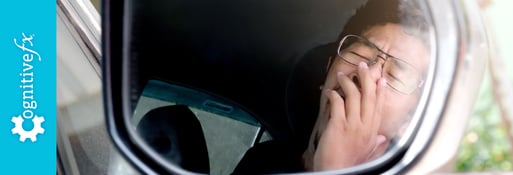It is that time of year, time to set back your clocks by an hour. The end of daylight savings time is a time of year that many people look forward to for that extra hour of sleep. This one-hour change can have some negative impacts when it comes to driving safety.
It’s easy to think that with an additional hour of sleep, drivers would be more alert and aware of their surroundings, especially when compared to when we spring forward an hour in March.
It is important that as we switch our time, we switch our mindset, driving safely should be a priority regardless of the season. Car accidents are in the top five causes of traumatic brain injury, including mild traumatic brain injury or a concussion.
Tips For Driving in the Dark
It is important that you drive safely in the dark, and it brings a whole new set of concerns when we add in time changes.
- Before you pull out of the driveway, ensure your headlights and brake lights are functioning properly so you can see and be seen while driving on the road when it’s dark.
- Allow yourself additional time for traveling as the fall and winter months approach. The seasons bring rain, snow, and ice that require more focus on the road.
- Approach all crosswalks, intersections, and transit stops with caution because it will be harder to see pedestrians and cyclists.
- Follow the speed limits and adjust your speed accordingly to weather conditions.
- Maintain a safe following distance so you’re prepared to react under any situation while driving.
- Don’t drive distracted, this should be followed regardless the time of the year. Driving while distracted with limited visibility and/or in poor weather conditions can cause serious injury or even death.
Tips to Prepare Your Vehicle
- Top off the windshield wiper fluid and replace the wiper blades. This will ensure your windshield is free of debris that could block your view while driving in the fall/winter months. Wiper blades should actually be replaced every six months to maintain optimum visibility while driving.
- Restock your car safety kit with winter-related items like blankets and/or heat packets. If you don’t have a car kit already, you can purchase or create a car kit yourself.
- Have your vehicle inspected (wheel check, oil changes, filter changes) and tuned up before the winter weather hits to minimize your chance of becoming stranded on the road.
- Consider getting winter tires. Winter tires provide more traction and help to handle freezing temperatures better than the all-season tires.
Cognitive FX can see how setting back the clock may be a great opportunity to stay up late, but, the time change can impact the quality of your sleep and your body’s internal clock. Whether you’re driving, cycling or walking, take advantage of the extra hour, to get a good night’s rest and be more proactive on the road as the days are shorter in the holiday season.







